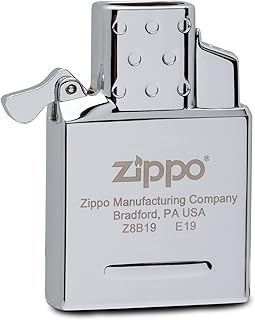The Science of the Zippo Lighter: A Flame in Your Pocket
The Zippo lighter, a recognizable icon, relies on a surprisingly simple yet effective combination of physics and chemistry to produce a reliable flame. Here's the breakdown:
1. Fuel: Naphtha
* Composition: Naphtha is a highly flammable liquid hydrocarbon mixture obtained from petroleum refining. It evaporates easily at room temperature.
* Function: When the Zippo is ignited, the naphtha vaporizes and mixes with air, creating a flammable mixture.
2. The Flint:
* Material: The flint is made of a hard, brittle material like ferrocerium, an alloy of iron and cerium.
* Function: The flint's high melting point allows it to produce sparks when struck against the striker wheel.
3. The Striker Wheel:
* Material: The striker wheel is made of steel.
* Function: The striker wheel is designed to create friction when struck against the flint, generating heat and producing sparks.
4. The Spark:
* Generation: When the striker wheel rubs against the flint, the friction generates enough heat to melt a small amount of the flint's metal. This melted metal vaporizes and reacts with oxygen in the air, producing a shower of sparks.
* Ignition: The sparks ignite the flammable naphtha vapor, producing a flame.
5. The Wick:
* Material: The wick is made of cotton fibers.
* Function: The wick absorbs the naphtha fuel and acts as a conduit, transporting the fuel to the flame.
6. The Windshield:
* Material: The Zippo's distinctive metal casing acts as a windshield.
* Function: The windshield protects the flame from wind, allowing it to burn consistently even in less-than-ideal conditions.
In Summary:
The Zippo lighter utilizes a mechanical process to generate sparks. These sparks ignite the flammable naphtha vapor, which burns continuously thanks to the wick and the windproof casing. It's a beautiful example of how simple scientific principles can be harnessed to create a useful and iconic tool.


